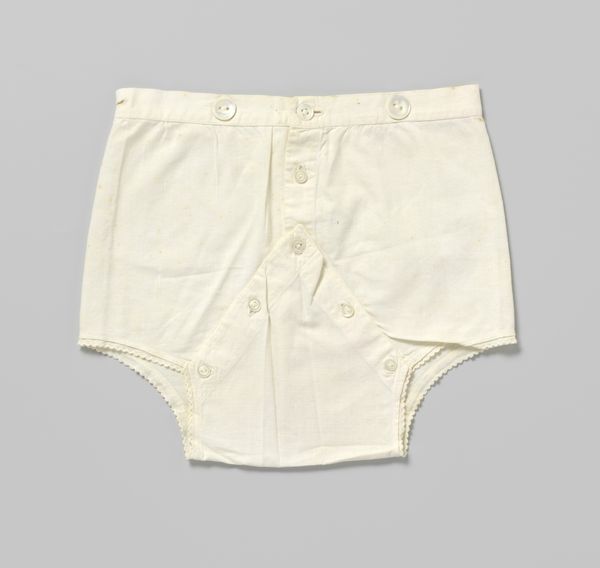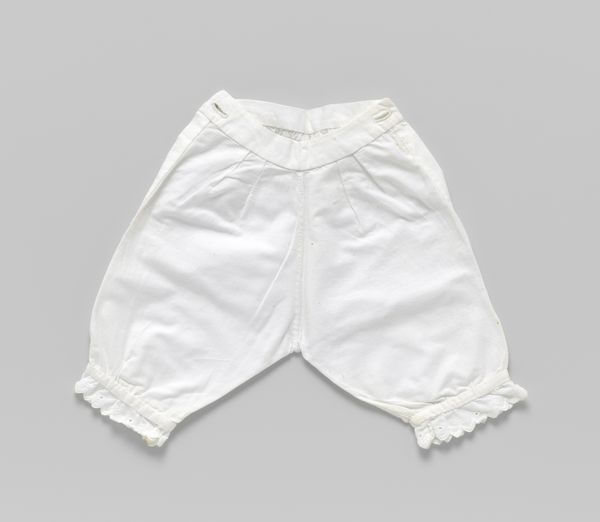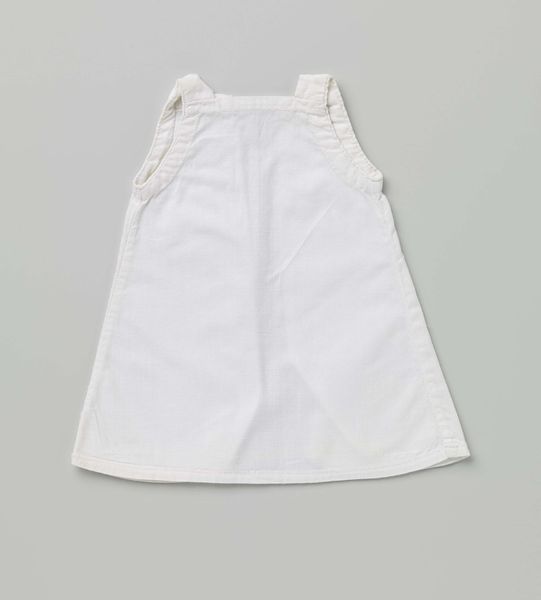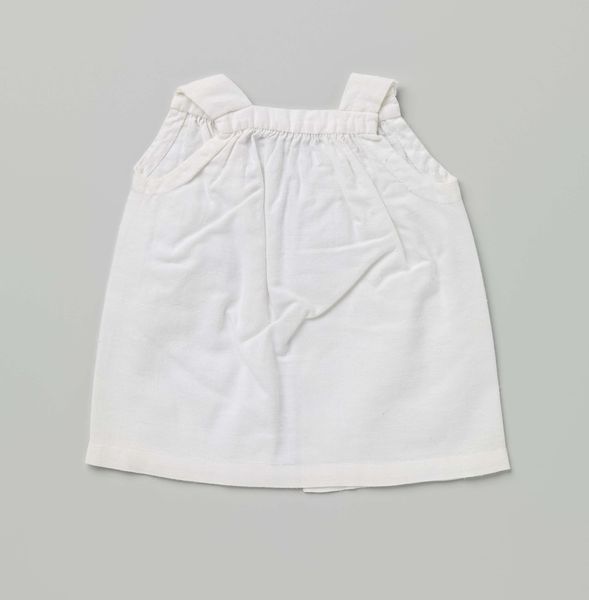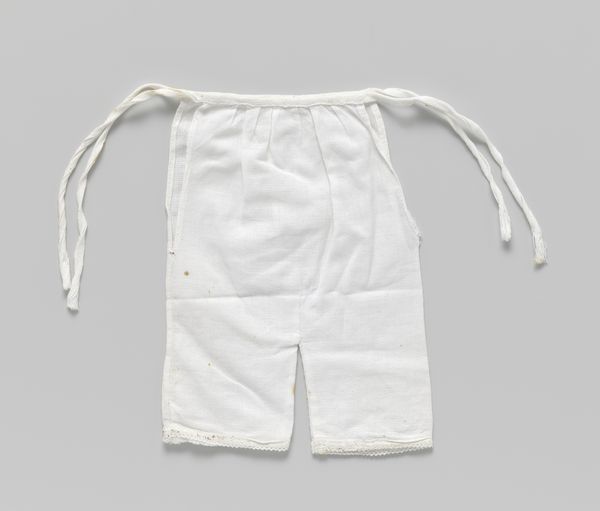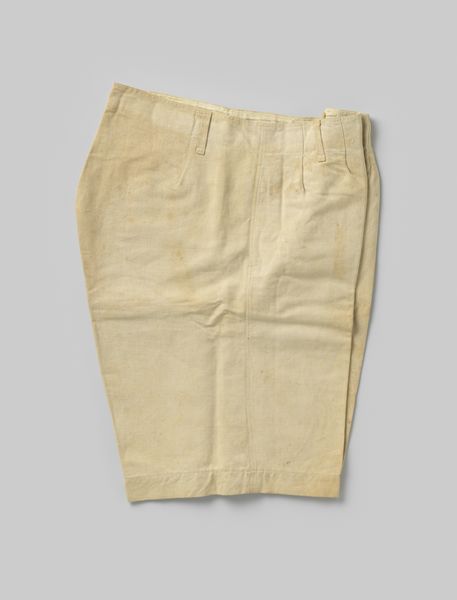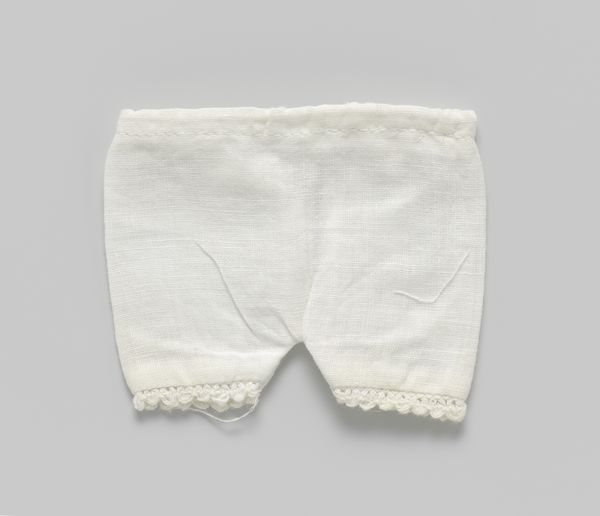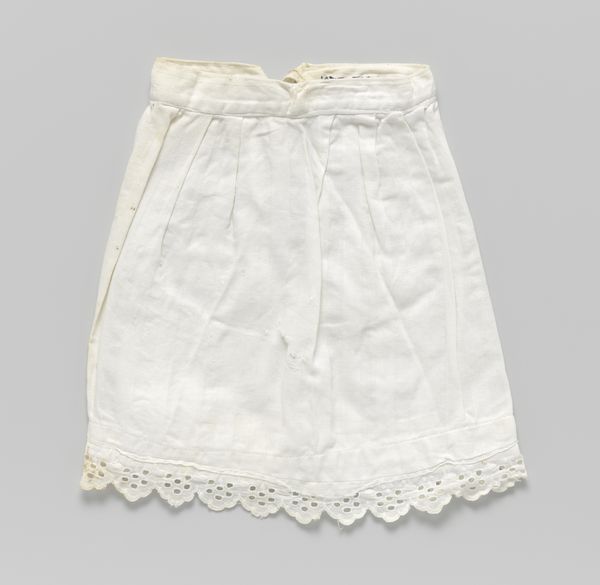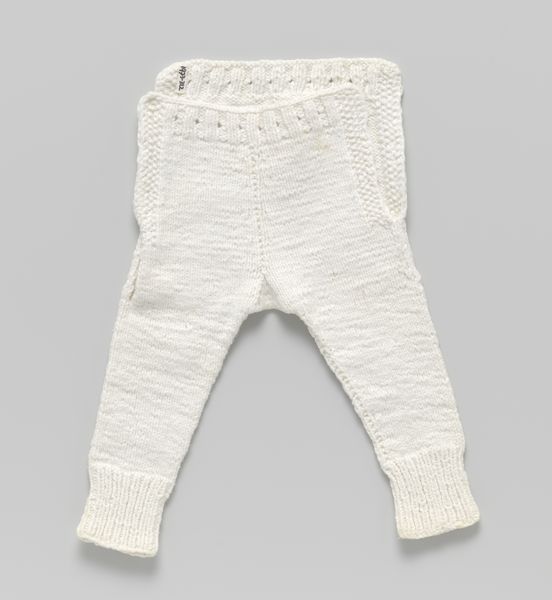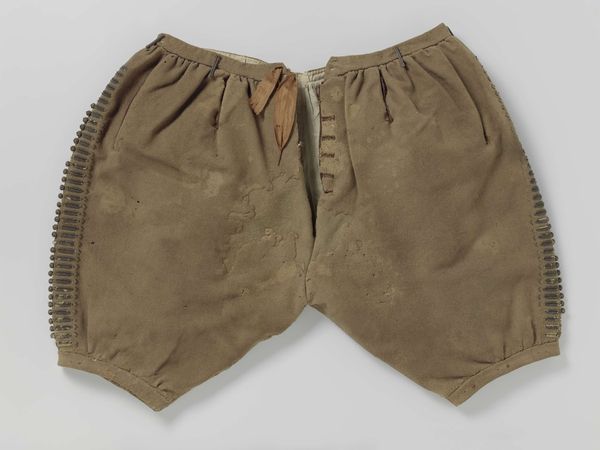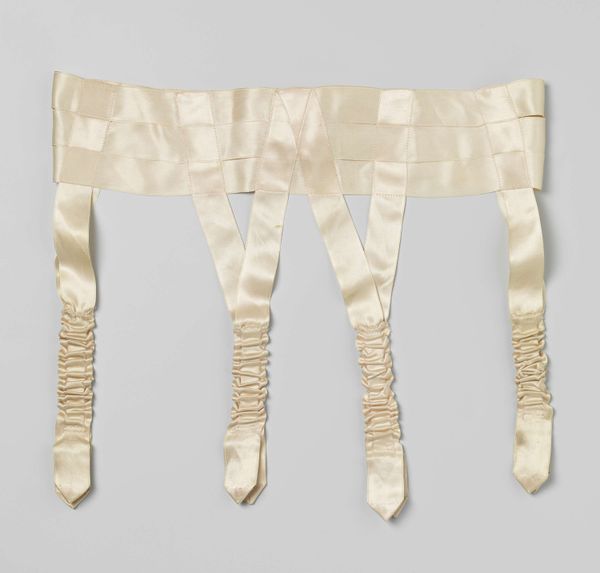
Katoenen kinderonderbroek, versierd met geborduurde bloemetjes en afgezet met een machinaal kanten strookje c. 1925
0:00
0:00
fibre-art, textile, cotton
#
underwear fashion design
#
fibre-art
#
fashion mockup
#
fashion merchandise
#
textile
#
clothing promotion photography
#
fashion and textile design
#
fashion based
#
clothing photography
#
clothing photo
#
cotton
#
decorative-art
#
imprinted textile
#
clothing design
Dimensions: length 38.5 cm, width 33 cm, width 37.5 cm
Copyright: Rijks Museum: Open Domain
Curator: Aren't they adorable? This is a pair of children's cotton underwear from around 1925. It’s decorated with embroidered flowers and machine-made lace. Can you imagine the tiny person who wore these? Editor: Utterly charming! And fragile looking. It evokes a time of innocence and care, almost like a preserved butterfly. What I notice first is how deceptively simple they appear, yet there's an abundance of delicate details upon closer inspection. Curator: Absolutely. Consider the context. Mass production was really ramping up then. Before, something like this would’ve been entirely handmade. The embroidery shows there's still an element of handcraft. Plus, it’s from the collection of one Mevrouw Boissevain-Brantjes—suggesting a certain level of domestic comfort, or access to it, at least. Editor: It’s interesting how everyday objects acquire cultural significance over time. It raises the question: why preserve children's undergarments? Is it sentimentality, a desire to document fashion history, or something else entirely? To me it's more than simple underwear. It almost feels like a tender memento. It whispers stories about childhood, family, and perhaps a certain bygone ideal of innocence. Curator: Indeed, museums help to safeguard tangible traces of social history and it also emphasizes societal standards about family, children and class distinctions. In many ways it prompts the public to question social structures. The addition of machine-made lace shows accessibility to new consumer goods. These kinds of pieces are a valuable cultural asset to society. Editor: Thinking about those embroidered flowers; they bring a smile. There's a lovely touch of handmade tenderness, of humanity blossoming in the age of machinery. A bit ironic if you think about it! It feels important that such personal items can transcend their functional origins and inspire deeper thinking about cultural and personal memory. Curator: Absolutely, art makes one consider and reconsider social systems of the past to potentially build a new outlook on social issues within contemporary times. It provides invaluable information. Editor: That is true; on many different layers this little garment shows great complexities.
Comments
No comments
Be the first to comment and join the conversation on the ultimate creative platform.
